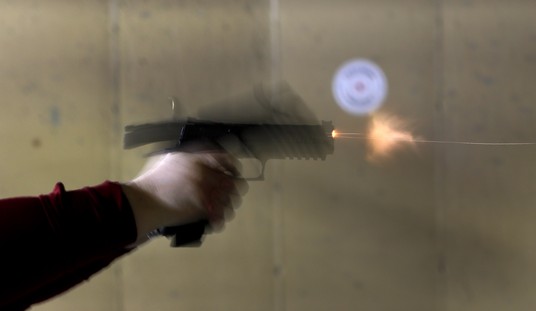 Christmas 1986, the last gun Daddy ever gave me. Nothing much to look at, Ithaca Flues Model, twelve bore, field grade. Double barrels, double triggers, extractors. Bluing turned brown, stock too short, barrels too long, too much drop, too much choke. But a man might drink a lot of good liquor before he heard the tale this gun could tell.
Christmas 1986, the last gun Daddy ever gave me. Nothing much to look at, Ithaca Flues Model, twelve bore, field grade. Double barrels, double triggers, extractors. Bluing turned brown, stock too short, barrels too long, too much drop, too much choke. But a man might drink a lot of good liquor before he heard the tale this gun could tell.
Daddy drank his share of good liquor and he told his share of stories. He told me about half of this one but I had to find out the other half for myself. That’s the way he always was, pointing me in the right direction then turning me loose. He gave me a twelve foot wood boat, too, a set of oars, but no life jackets. Never figured if he thought such strategy through, or if it just came to him natural.
The Ithaca came from the estate of Miss Beatrice Milley, Daddy’s third grade teacher. Miss Milley came to South Carolina with her own daddy, a Yankee veteran who fell in love with this country during the War of Northern Aggression. The gun came to Miss Milley from Charles Gray, deer and duckhunter of Hilton Head Island. It came to Charles Gray by way of Honey Horn Plantation. And it came to Honey Horn by way of the fantastic Alfred Lee Loomis, Wall Street insider, America’s Cup sailor, and lover of electronic gadgetry, inventor of the chronograph, co-inventor of radar, the cyclotron, a friend of Albert Einstein and Enrico Fermi, and a contributor to the Manhattan Project.
Albert Loomis and his brother-in-law Langdon K Thorne bought the seventeen thousand acre plantation in 1931. It was part of a larger and more curious situation. After being pillaged by the Yankees, plantations around here were snapped up by Yankee industrialists for winter homes and hunting retreats at pennies on the dollar. A man with money could slide in and be king. Bernard Baruch, Henry Ford, Cornelius Vanderbilt, Andrew Carnegie, Joseph Pulitzer, assorted Guggenheims, they all came. So complete was the takeover, by the 1930’s hardly a plantation on the coast of South Carolina or Georgia still belonged to a local family.
Honey Horn was a sweet place indeed, though the name likely was a corruption of “Hanahan” one of the early owners, whose name proved difficult for his slaves, who spoke Gullah, a Creole dialect. If Loomis wanted respite from city life, he found it here. The place tottered on the edge of the world. Five hundred miles by rail from New York to a farm town siding. Seventeen miles of dirt road, a timber bridge, an hour boat ride, then yet another hour to the bar and bed. The big house was tidy, white, and well provisioned, including a battery of firearms, so no guest could have an excuse not to shoot. And the shooting was good, doves, deer and quail mostly, once in a while, wild hogs. There were dogs and horses for each, fishing boats and local guides on beck. The children of slaves struggling a living from the sea and sandy soil, a lighthouse and a Coast Guard radio. No pavement, no electricity, no phone, just the steamboat Clivedon, huffing up from Savannah weekly.
.jpg) But to the gun. There are four Ithaca doubles of note, Crass, Lewis, Flues, and the New Ithaca Double, code-named among aficionados as the NID, which came out just in time for the Great Depression. This Ithaca is a Flues, built in 1922, one of 223,000 between 1908 and 1926, the all-time best-selling American double gun. The Flues Ithaca changed history. It drove Remington out of the double gun market, and spawned unprofitable competitors in the L C Smith Fulton, Fox Sterlingworth and the Parker Trojan, which ultimately led to their respective companies’ demise.
But to the gun. There are four Ithaca doubles of note, Crass, Lewis, Flues, and the New Ithaca Double, code-named among aficionados as the NID, which came out just in time for the Great Depression. This Ithaca is a Flues, built in 1922, one of 223,000 between 1908 and 1926, the all-time best-selling American double gun. The Flues Ithaca changed history. It drove Remington out of the double gun market, and spawned unprofitable competitors in the L C Smith Fulton, Fox Sterlingworth and the Parker Trojan, which ultimately led to their respective companies’ demise.
All because Emil Flues got tired of cutting and filing. Emil Flues is a hard man to track down, even though he has been dead nearly a hundred years. After four days, the Internet will not disgorge his birth and death dates. His descendents seem as baffled as I. He’s likely in Bay City, Michigan in the beginning, the son of a German immigrant who was noted for bringing twenty five deer to market one fall. Toiling over a coal forge, no electricity, no central powered jackshaft, Flues pondered a simplification in cocking a break action gun. In 1895, he was granted Patent # 546,516, only three moving parts per barrel. A dozen years later, Ithaca bought the patent, upgraded it to mass machining and produced guns that still bear his name. Annie Oakley shot a Flues, as did John Phillip Sousa, quoted as saying, “A good gun, a good horse, a pretty girl and a little music on the side.” But there are no reports of a dalliance between the noted bandmaster and Miss Oakley.
By that time, Flues was building custom guns in Buffalo and notables were beating a path to his door, including William Cody and cowboy actor Tom Mix. There is another report, difficult to dismiss. In 1922, Hailie Selassie, the King of Abyssinia, the Lion of Judah, visited Flues to pick up a gun he had commissioned at a cost of three thousand dollars. This was at a time when a rocky hillside farm sold for a fraction of that amount. It was also a time when Negroes, even kings, could not ride coach class. Folklore says Selassie arrived in a freight car, riding atop a load of cabbages. As the Lion of Judah is now considered Jah, the Son of God by millions of Rastafarians, this event would have equaled Jesus’ birth in a barn.
Daddy’s dead and gone now. Robert E Lee’s last words were “Strike the tent.” Stonewall Jackson said, “Let us cross over the river and rest in the shade of the trees.” Daddy’s squinted off into Eternity and gasped, “I can’t see to get across.” But he was good riverman, so I know he found safe passage.
And the world finally caught up with Honey Horn. It’s less than one hundred acres now, a museum and interpretive center for tourists. The land is all cut up for ticky-tacky houses and they shoot the deer off the fairways at night to keep them off rich women’s azaleas. The only quail are in restaurants you can hardly afford. The Ithaca stands in my corner closet, but not always. I break it out now and then for my own children, my friends, a loaner gun now as always. Stuffed with single-ought, it downed a buck last year. And I know it will kill again.
A Flues ejector 28 sold for five grand just a few months ago on the Internet. And you can buy all the Field Grade twelves you want for less than a thousand each. But is this gun for sale? Don’t even ask. It’s still got some talking to do.








Join the conversation as a VIP Member